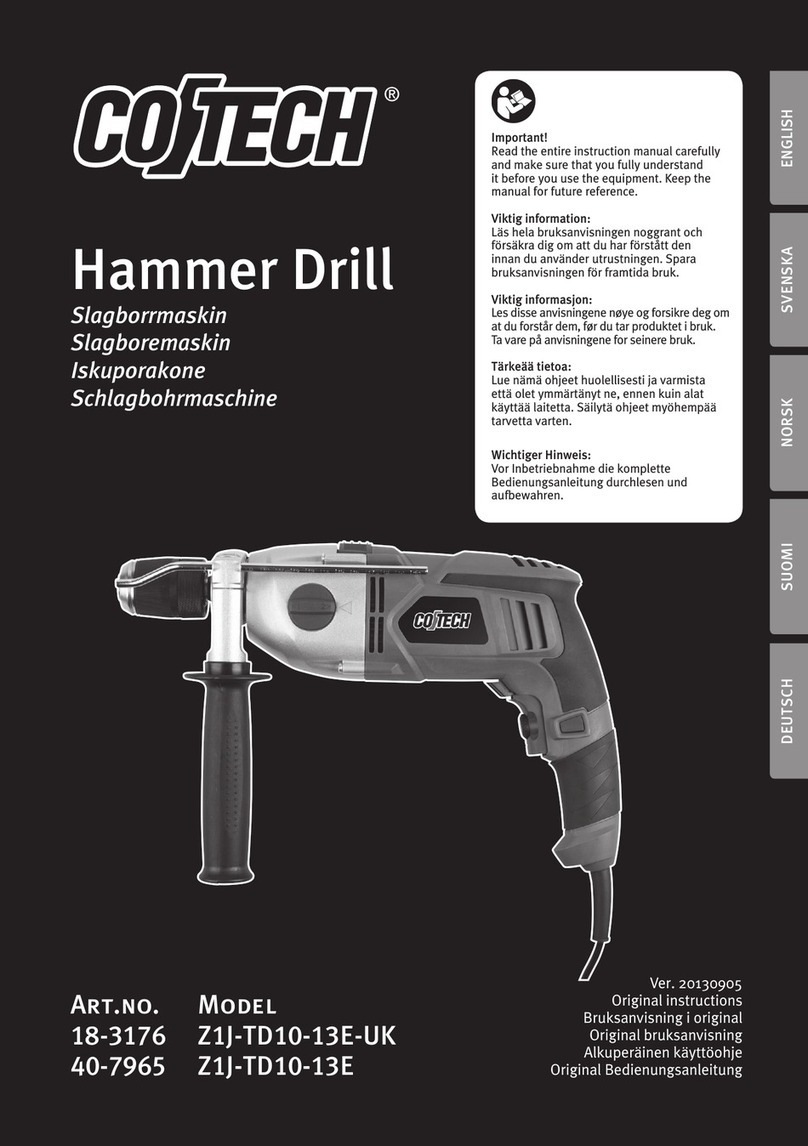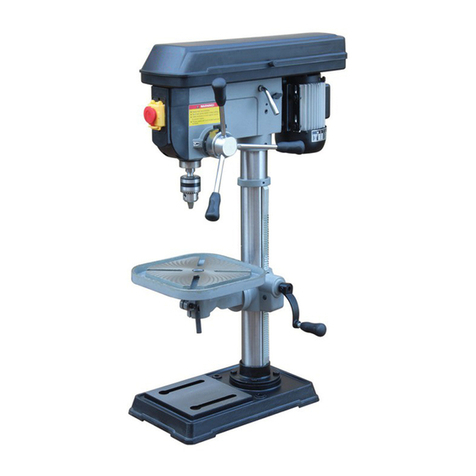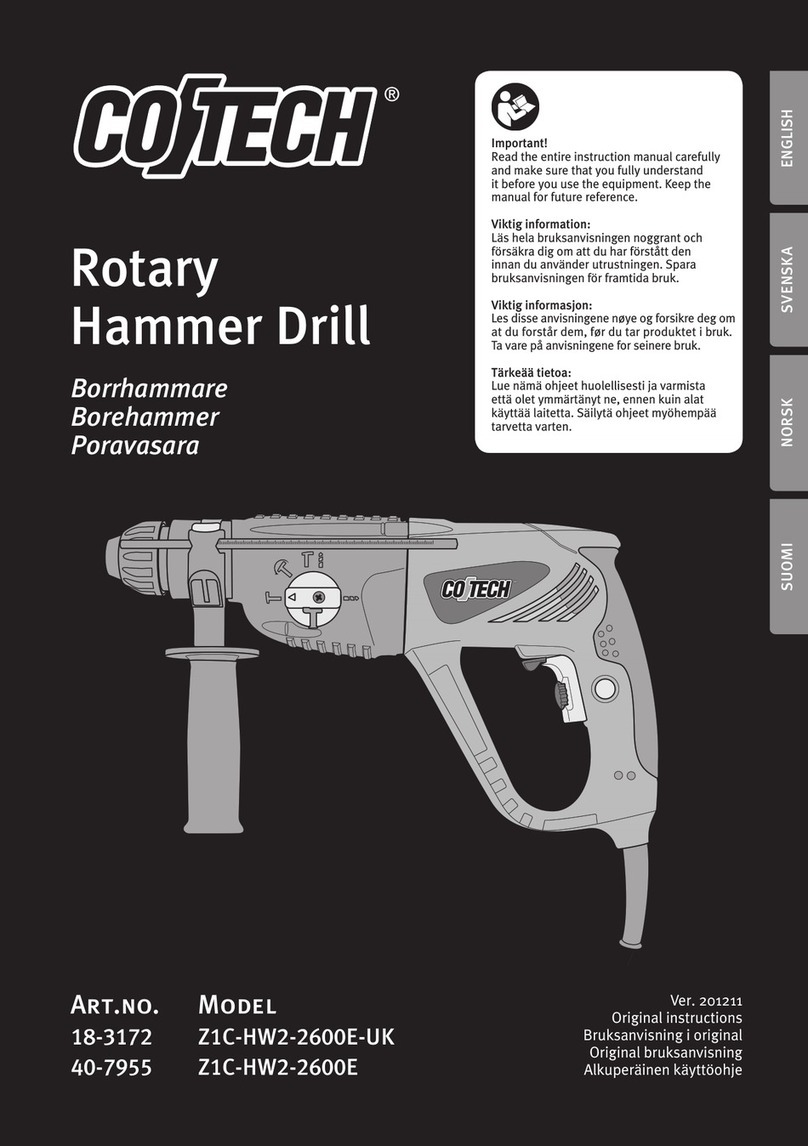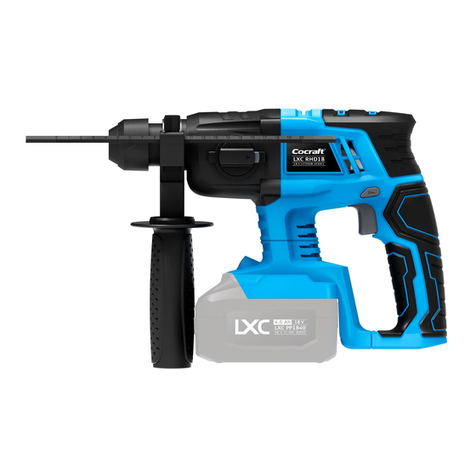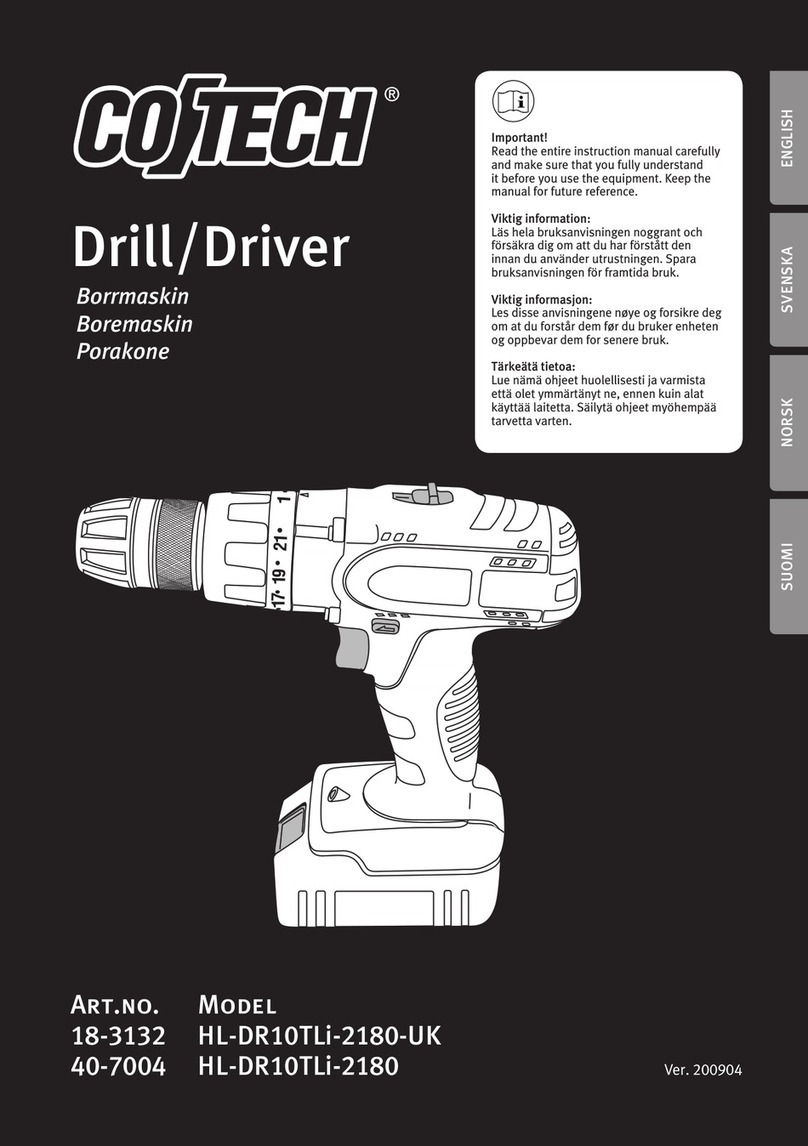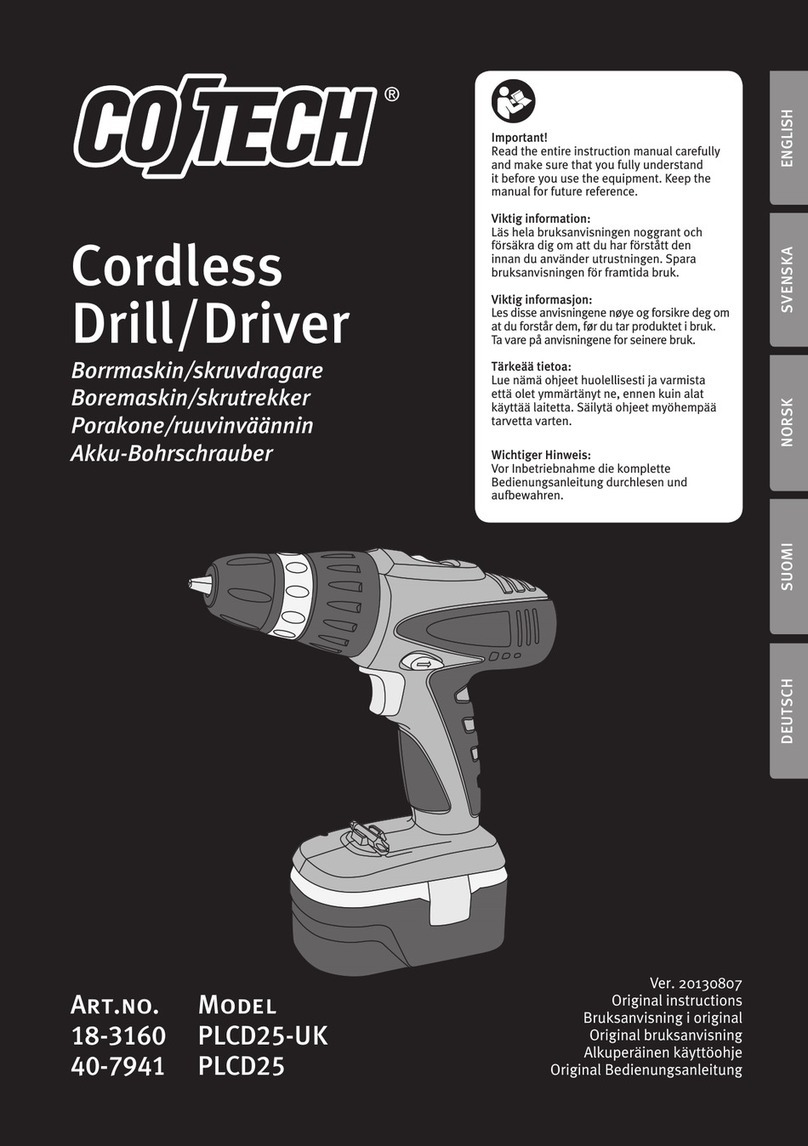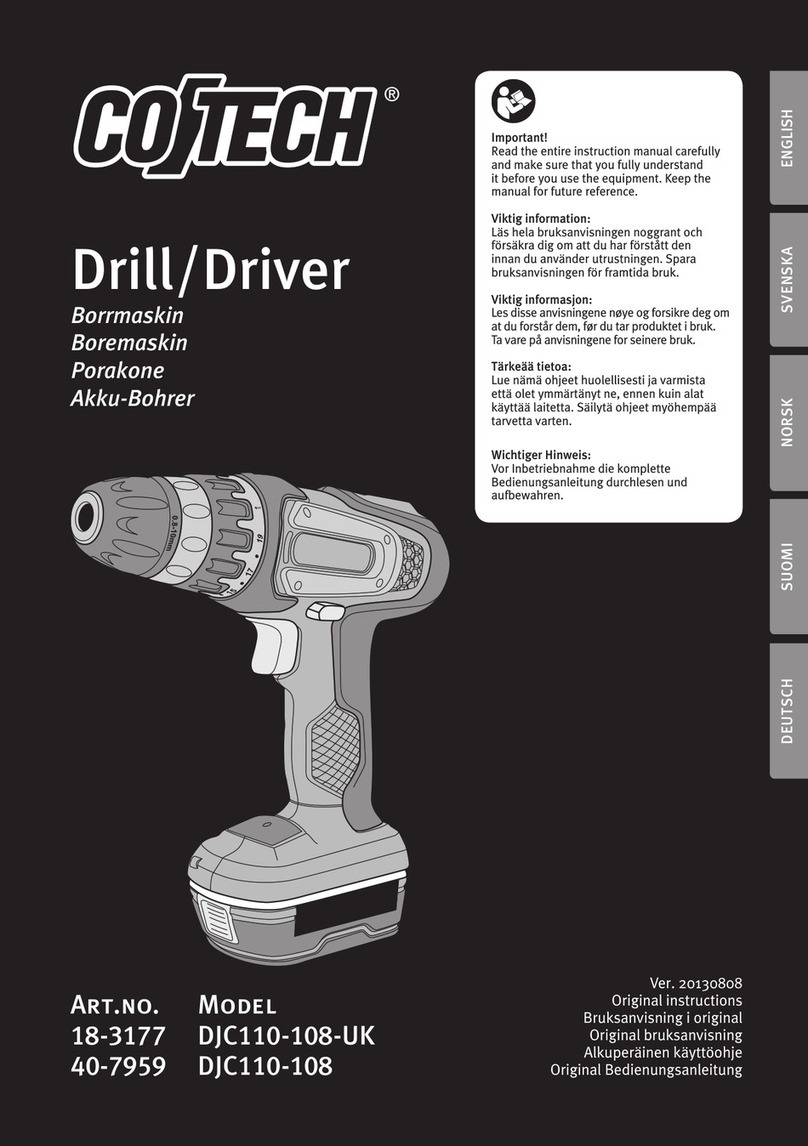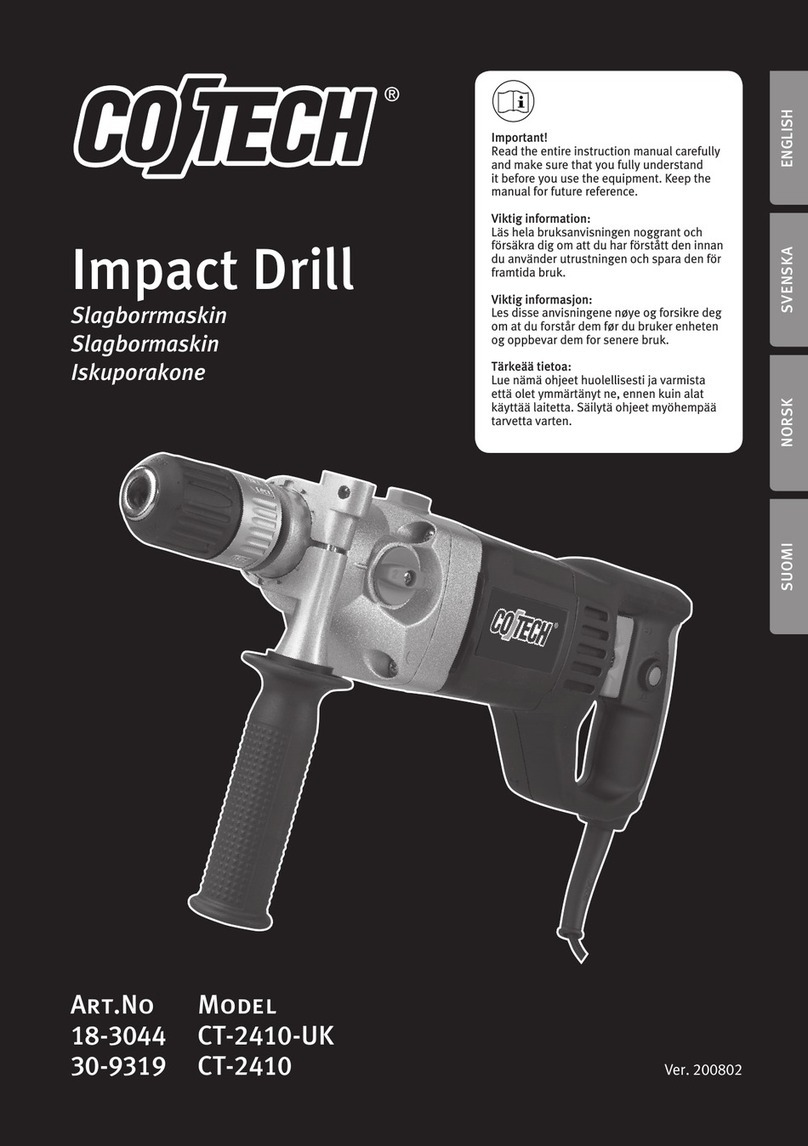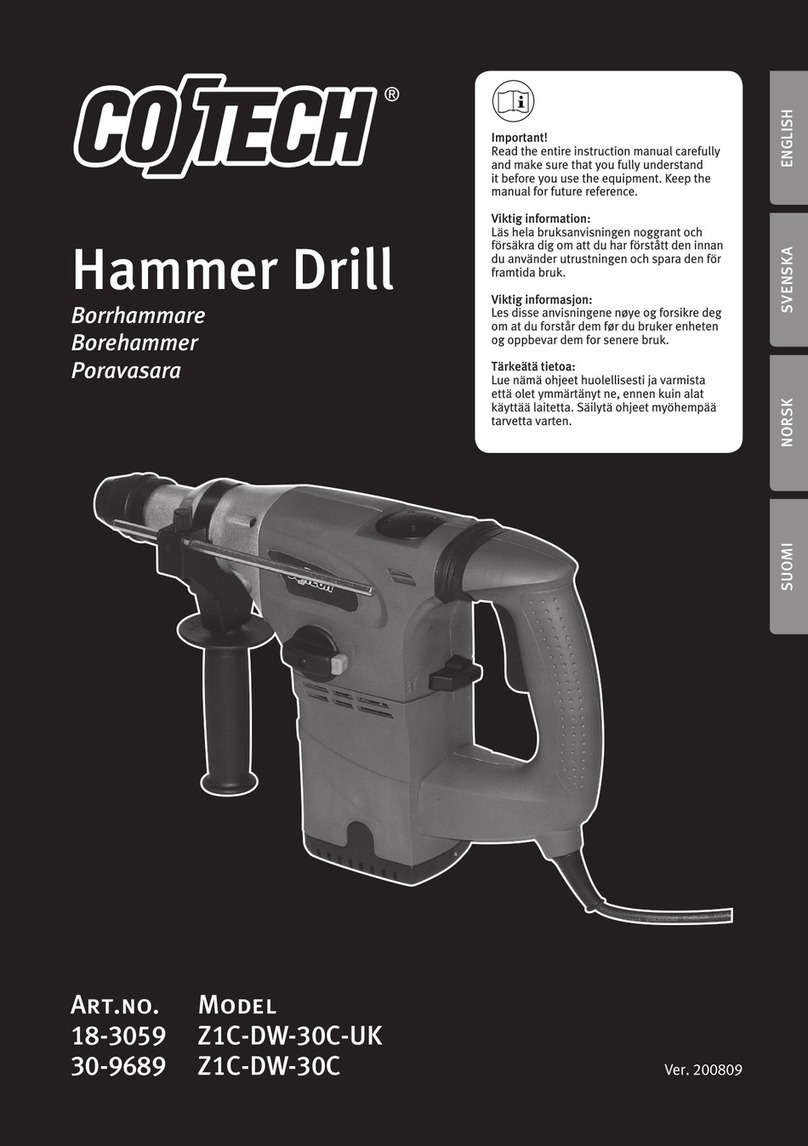
10
ENGLISH
Useful Tips
• After having worked the drill hard for a while let the motor run for a few minutes
(until the air leaving the ventilation slits is at room temperature) without any load,
to cool it down.
• Use the side handle to help maintain full control when drilling.
• Only use sharp tools.
• Use Titanium coated drill bits for hard metals and Tungsten Carbide tipped drill
bits for concrete/tiles. If in doubt read the packet.
• Fasten the workpiece down securely. Use clamps or vices when you can, this will
leave you with both hands free to manoeuvre the machine with, which increases
precision.
• If you are drilling into thin materials it is important that you place a small piece of waste
material behind the hole to be drilled, otherwise there is a risk of burring on the back.
• Hold the drill perpendicular to the workpiece before you start drilling (look from
several directions) make sure that you do not tilt the drill when drilling.
• Do not press too hard (so that the machine loses speed) let the tool do the job!
Reduce pressure before the drill breaks through the material.
• Let the drill bit spin and lift it up after drilling through, it allows the machine to cool
down and the drill bit is freed of dust and wood chips.
Things to consider when drilling into wood and plastic
• For wood and other soft materials there are several types of tools, chose the tool
most suitable for the work to be done. Test drill on a piece of waste first.
• The tool can overheat if you don’t pull it up often to free it of sawdust.
• Place a small piece of waste material behind the hole to be drilled before starting to
drill otherwise there is a risk of burring around the edges of the hole on the back.
Things to consider when drilling into metal
• Mark the hole using a centre punch.
• The tool can overheat if you use the wrong speed. Use cooling liquid suitable for your
material e.g. methylated spirit for aluminium (cast iron and brass are cut dry).
• Use a low gear and low speed for big holes.
• Be extra careful with the clamping of thin or sharp metal objects so that they
do not come loose and cause damage or injury, use a vice if possible.
Things to consider when drilling into concrete, tile or brick
• Use Tungsten carbide tipped drill bits.
• Use a drill with hammer/impact action and work carefully, applying
constant pressure.
• The material residue comes out of the drilled hole as powder or dust, wear
a dust mask.
